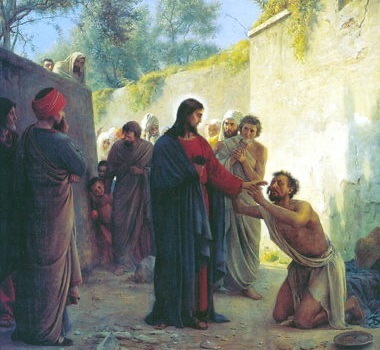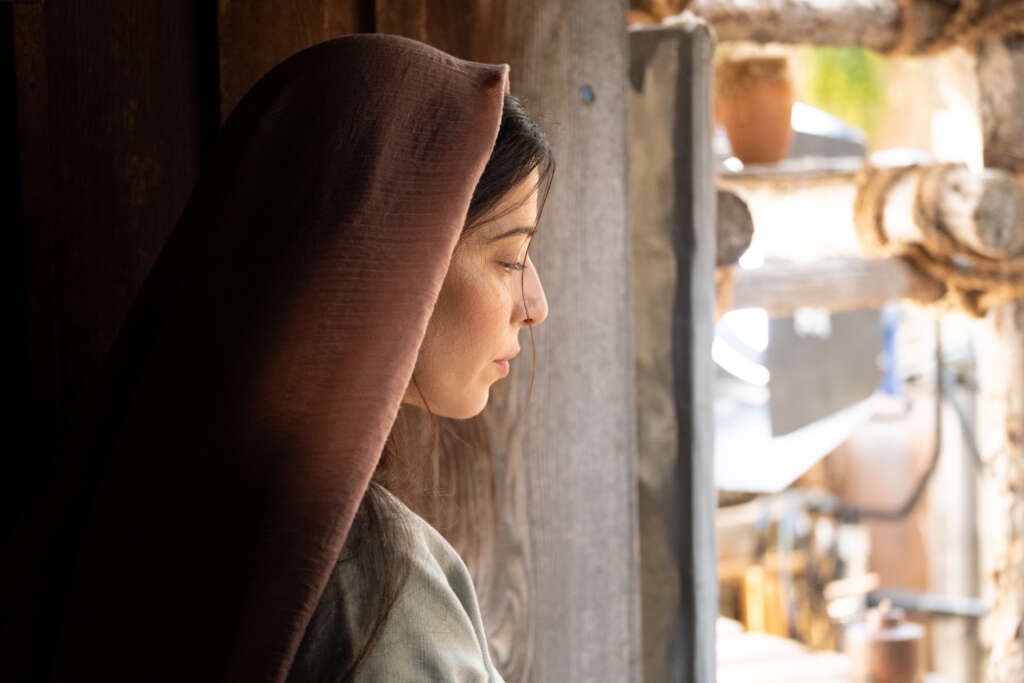
I don’t know about you, but Easter always makes me feel renewed. After six weeks of Lent and then the drama of Holy Week, Easter comes along like a long deep breath of fresh air. It’s as if the whole world inhales and drinks in the sunshine and new life of His resurrection. Easter affirms and strengthens us like no other season. Easter invites us to shake off our old ways and put on the white garment of our baptism. Every Easter Christ invites us again to follow Him. That need for a connection with God is hard-wired into us. As St. Augustine ways, our hearts are restless until they rest in Him. So how do our hearts “rest” in Jesus? There are several examples in the Gospels that show us how different people find their rest in Christ, but this is one of my favorites.
Bartimaeus is a blind beggar we see sitting on the road near Jericho (Mark 10:46-52). We remember that Jericho is a sinful city that the Israelites had to conquer in their quest to possess the Promised Land. The early Christians would hear this Gospel story and associateJericho with sinfulness. Then we learn that Bartimaeus is blind.
Being blind was a terrible affliction in Biblical times because you couldn’t earn a living to support yourself and your family. You had to beg. Begging is an act of profound humility. You are saying to the world: “I can’t make it on my own. I need your help.” And that’s what Bartimaeus did when he heard that Jesus was passing by—he begged Him for help. “Jesus, Son of David, take pity on me”(Mark 10:47). The people around him told Bartimaeus to be quiet, but hedidn’t listen to them. He kept begging Jesus to help him. So Jesus stood still and called for Bartimaeus to come closer. Bartimaeus threw off his cloak, leapt up, and ran to Jesus. Christ asked him, “What do you want Me to do for you? And the blind man said to Him, “Master, that I may see.” Jesus said, “Go, your faith has made you whole;” And immediately, Bartimaeus could see and he began to followJesus.
This encounter between the blind man and our Lord can teach us a lot about what it means to live in God’s grace. First, we have to know we’re sinners. Like Bartimaeus, we can’t see the good, the true and the beautiful. We’re weighed down in the dirt by our sins. When we can acknowledge our sinfulness, we know the only way out of it is to beg for help. We can’t fix ourselves. This is a real temptation in our “self-help” culture. But it’s not the Lord’s way. THe only way to gain our sight is to beg. And we have to persist and never stop asking. This can be uncomfortable because friends and family, like the crowd around Bartimaeus, don’t think we need to look to Christ for help. It goes against our cultural self-reliance. And it’s exactly what Jesus loves.
When we call out to Him, He stands still. Christ is the center of creation, the still point of the turning universe. Everything revolves around Him. He calls to Bartimaeus—just as He calls to each one of us. The Greek word that expresses that calling is the same root word as the word for “church.” Christ calls us into His Church. It’s never just a “me and Jesus” experience as some may think. Our calling is to love and follow Him in the context of His Bride, the Church. And when He calls us we should respond like the blind man does, by throwing off our cloak (our sins, our doubts, our old ways of doing things) and leap up to go to Jesus. Bartimaeus doesn’t hesitate or ask advice or call a committee meeting: he hears the call of Jesus, he throws off his old life and he runs to Him. And then Jesus asks him the central question of his life and of our lives.
“What do you want Me to do for you?” Imagine if your Savior asked youthat right now. What would you tell Him? Think about that for a moment. What can Jesus do for you right now, today, right where you are in your life? Bartimaeus tells Jesus that he wants to see. This is a great answer! He wants to see like Jesus sees. He wants to BE LIKE JESUS. And Jesus tells him that his faith has healed him.
When we run to Jesus and accept His calling, following Him wherever He leads us, His grace will make us whole. Christ frees us to become all that He created us to be. But that freedom comes with a great price–the Cross. When we embrace Jesus, we must also embrace His Cross. Easter is the great invitation to leap up, throw off our old ways, pick up our cross and follow the Lord. Our faith has healed us.His Cross has redeemed us. Alleluia! Christ is risen!
“Look for Christ and you will find Him, and with Him, everything else thrown in.” —C.S. Lewis



